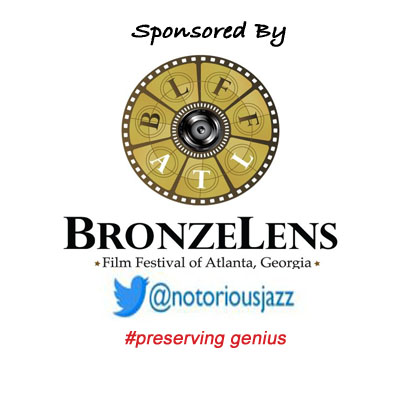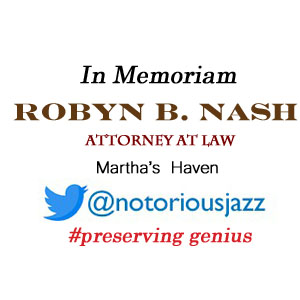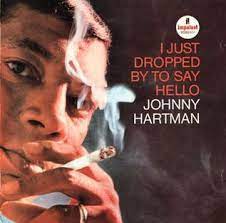
The Quarantined Jazz Voyager
A simple statement: You know what to do to remain safe and healthy. The fat lady hasn’t begun to warm up because it’s not over.
This week I am featuring an album by an understated vocalist who recorded some two dozen albums. I’ve selected from the library. I Just Dropped By To Say Hello is a studio album by jazz vocalist Johnny Hartman, released on Impulse! Records. It was his second and next-to-last album on the label, after his highly successful collaboration with John Coltrane which produced John Coltrane and Johnny Hartman, recorded a few months earlier.
Tracks 1 & 6 were recorded on October 9, 1963 and the balance of the songs were recorded on October 17, 1963 at Van Gelder Studios in Englewood Cliffs, New Jersey. It was produced by Bob Thiele, The album was mastered at Longwear Plating and released in 1964. Tracks 1~6 were on the A side of the album and 7~11, the B side of the original album.
Track List | 33:09- Charade (from Charade) (Henry Mancini, Johnny Mercer) ~ 2:38
- In the Wee Small Hours of the Morning (Bob Hilliard, David Mann) ~ 2:49
- A Sleepin’ Bee (Harold Arlen, Truman Capote) ~ 2:15
- Don’t You Know I Care (Or Don’t You Care To Know) (Mack David, Duke Ellington) ~ 4:14
- Kiss & Run (Rene Denoncin, William Engvick, Jack Ledru) ~ 3:35
- If I’m Lucky (Eddie DeLange, Josef Myrow) ~ 2:52
- I Just Dropped by to Say Hello (Sid Feller, Rick Ward) ~ 4:10
- Stairway to the Stars (Matty Malneck, Mitchell Parish, Frank Signorelli) ~ 3:09
- Our Time (Stanley Glick, Johnny Hartman) ~ 3:00
- Don’t Call It Love (Ronnell Bright) ~ 2:07
- How Sweet It Is to Be in Love (George Cardini, Danny DiMinno) ~ 2:20
- Johnny Hartman ~ vocals
- Illinois Jacquet ~ tenor saxophone
- Kenny Burrell ~ guitar (tracks 2-5, 7-11)
- Jim Hall ~ guitar (tracks 1, 6)
- Hank Jones ~ piano
- Milt Hinton ~ double bass
- Elvin Jones ~ drums
More Posts: adventure,album,club,genius,jazz,museum,music,preserving,restaurant,travel,vocal
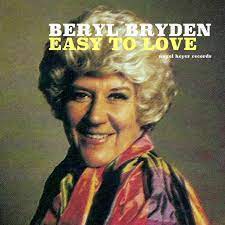
Daily Dose Of Jazz…
Beryl Audley Bryden was born May 11, 1920 in Norwich, Norfolk, England and was an only child Her enthusiasm for jazz music started during her teenage years, becoming a member of the National Rhythm Club when she was 17 and became secretary of the local branch in 1941. An ardent jazz fan she established a Nat Gonella fan club in her teens, before taking up the washboard and singing, influenced by Bessie Smith.
Moving to Cambridge in 1942 at 22, post WWII she returned to London with the hope of starting a career in music/ She worked with Mick Mulligan and George Melly at London jazz venues and became a supporter of visiting American jazz acts when the Musicians Union ban was lifted. Beryl befriended, amongst others, Buck Clayton, Louis Armstrong and Bud Freeman, with whom she recorded.
By 1949 she formed her own group called Beryl’s Back-Room Boys and later worked with Mike Daniels. In 1955 she joined the Chris Barber band on washboard, and played on Rock Island Line with Lonnie Donegan on vocals. This track helped trigger the ‘skiffle’ craze of the late 1950s.
Graduating to the Monty Sunshine jazz band she covered Bessie Smith’s Young Woman’s Blues, Gimme a Pigfoot (And a Bottle of Beer, and Coney Island Washboard Blues, which demonstrated her washboard technique.
She remained active at the end of the British trad jazz boom, and became particularly popular in Northern Europe, playing with the Ted Easton Jazz Band and The Piccadilly Six. She was active well into the Nineties playing with the Metropolitan Jazz Band, Digby Fairweather, Nat Gonella and her own Blue Boys.
Vocalist Beryl Bryden, whose final recording was with Nat Gonella shortly before her death, transitioned from lymphoma, aged 78, at St Mary’s Hospital, Paddington, England on July 14, 1998
More Posts: bandleader,history,instrumental,jazz,music,vocal,washboard
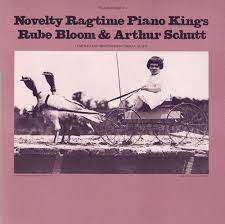
Daily Dose Of Jazz…
Reuben Bloom was born April 24, 1902 in New York City, New York to Jewish parents. During the 1920s he wrote many novelty piano solos, recorded for the Aeolian Company’s Duo-Art reproducing piano system various titles including his Spring Fever. His first hit came in 1927 with Soliloquy; his last was Here’s to My Lady in 1952, which he wrote with Johnny Mercer. In 1928, he made a number of records with Joe Venuti’s Blue Four for OKeh, including five songs he sang, as well as played piano.
He formed and led a number of bands during his career, most notably Rube Bloom and His Bayou Boys, which recorded three records in 1930. The Bayou Boys consisted of Benny Goodman, Adrian Rollini, Tommy Dorsey, Mannie Klein and Frankie Trumbauer in the Sioux City Six.
His I Can’t Face the Music, Day In Day Out, Fools Rush In (Where Angels Fear To Tread) and Give Me The Simple Life has become a part of the Great American Songbook and jazz standards.
During his career, he worked with many well-known performers, including those mentioned above and Ruth Etting, Stan Kenton, Jimmy Dorsey and collaborated with a wide number of lyricists, such as Ted Koehler, and Mitchell Parish.
Pianist, arranger, bandleader, recording artist, vocalist, and author Rube Bloom published several books on piano method before he transitioned on March 30, 1976 in his home city.
More Posts: arranger,author,bandleader,composer,history,instrumental,jazz,music,piano,vocal

Daily Dose Of Jazz…
Esther Miller was born on April 12, 1968 and raised in the east coastal motor city of Port Elizabeth, South Africa. It is here that she sang in church and school choirs and raided the family Nat King Cole albums for early inspiration.
Leaving Port Elizabeth to study medicine at Cape Town University, she soon gave in to the lure of jazz. Esther started her professional career as the vocalist with Gerry Spencer’s Jazz Cyclone, one of the leading bands on the South African jazz circuit at the time.
During this early apprenticeship Miller worked with some excellent players on both sides of the pond, Herb Ellis, Alan Skidmore, Johnny Fourie, Errol and Alvin Dyers, Winston Mankunku and Ezra Ngkukana, to name but a few.
Esther has honed her technique with classical singing lessons and delved into jazz history, gleaning inspiration from Sarah Vaughan, Billie Holiday, Shirley Horn, Blossom Dearie, Frank Sinatra, and of course, Nat King Cole.
She performed in South African jazz festivals, concert halls and jazz clubs before settling in the United Kingdom for 10 years. There she performed and recorded with some excellent musicians including Steve Melling, Steve Waterman, Zoltan Dekany, Karen Sharp, among others.
Possessing an outstanding technique and sensitive interpretation, with a half dozen albums under her belt, vocalist Esther Miller has moved to Denmark where she continues to add to her repertoire as she explores the Scandinavian jazz scene.
More Posts: bandleader,history,instrumental,jazz,music,vocal

Daily Dose Of Jazz…
John Paul Pizzarelli Jr. was born April 6, 1960, in Paterson, New Jersey and started playing guitar when he was six He attended Don Bosco Preparatory High School, an all-boys Catholic school. In his teens, he performed with Benny Goodman, Les Paul, Zoot Sims, Slam Stewart, and Clark Terry.
He played trumpet through his college years, attending the University of Tampa and William Paterson University, but his most important teacher was his father through the Eighties. During that period he established himself as a jazz guitarist and a vocalist and released his debut solo album, I’m Hip (Please Don’t Tell My Father) in 1983.
During the 1990s, Pizzarelli played in a trio with Ray Kennedy and his younger brother Martin. In 1993, the trio opened for Frank Sinatra in Las Vegas, Nevada and four years later, he was starring on Broadway in Dream, a show devoted to the music of Johnny Mercer.
Naming Nat King Cole as the inspiration for his career, he has honored him with the albums Dear Mr. Cole and P.S. Mr. Cole. He has also recorded tribute albums to Frank Sinatra, Duke Ellington, Antônio Carlos Jobim, Richard Rodgers, and Paul McCartney. Along with his father accompanying Annie Ross, they recorded her album To Lady with Love, a tribute to Billie Holiday that Ross recorded when she was eighty-four.
He has hosted a national radio show, Radio Deluxe with John Pizzarelli, and has worked with George Shearing, Rosemary Clooney, Johnny Frigo, Buddy DeFranco, the Clayton-Hamilton Jazz Orchestra, the Boston Pops Orchestra, and the Cincinnati Pops Orchestra.
As a co-producer of the James Taylor album American Standard, he received a Grammy nomination for Best Traditional Pop Vocal Album in 2020. Guitarist and vocalist John Pizzarelli continues to explore and expand his musical vocabulary.
More Posts: bandleader,guitar,history,instrumental,jazz,music,vocal



